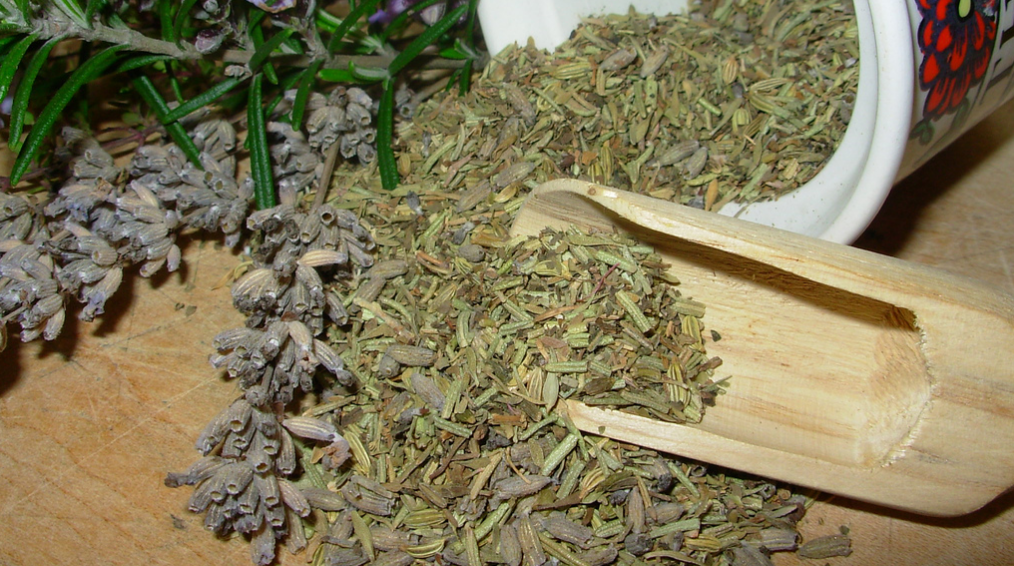
The ancient Egyptians, Greeks, and Romans were just a few of the civilizations who used spices extensively throughout history. The culinary use of spices quickly eclipsed the earlier emphasis on their medicinal worth. Today, spices are commonly used in the kitchen to enhance the flavor and scent of food. Cinnamon, cumin, turmeric, paprika, and all the rest have their own distinct flavors and health advantages. The value of spices in cooking can be better appreciated once their background and cultural significance are known.

Learning About Herbs & Spices: Roots, Branches, and Stems
Herbs, seeds, and roots are the three main families of ( Herbs De Provence Seasoning ) spices. Herbs, which include basil and thyme, are the leaves of plants that can be used either fresh or dried. Seeds are the dried fruits of vegetation and include spices like cumin and mustard. Dried or powdered forms of roots, such as ginger and turmeric, are commonly used in cooking. Different spices impart unique flavors and have different use in the kitchen. When cooking, it’s helpful to know the distinctions between herbs, seeds, and roots.
How Spices Improve Your Health and Strengthen Your Immune System
Spices are used to enhance the flavor of food, but they also have many beneficial effects on the body. Antioxidants, anti-inflammatory compounds, and other nutrients found in many seasonings have been shown to improve immune function and general well-being. Curcumin, which is found in turmeric, is an example of a compound with anti-inflammatory characteristics that may also provide protection against chronic disease. Ginger can reduce sickness and inflammation, and cinnamon can help control blood sugar levels. Cooking with spices is a great way to get the flavorful ingredients you love and the health advantages they provide.
The Art of Using Spices in Cooking: Methods and Advice
The perfect combination of spices can transform a dish from mundane to magnificent, making cooking an art form. Knowing each spice’s own flavor character and how it will blend with other components is crucial when preparing meals. To improve the aroma and taste of whole spices before grinding them is one method. One more trick for giving food more nuanced taste is to use a combination of spices. It is essential to balance spices with other components like acid and salt. You’ll learn how to use a wide range of spices to create recipes that are both tasty and visually appealing.
The 10 Most Important Spices in Every Kitchen
Having a well-stocked seasoning cabinet can make creating delicious meals a breeze. Listed below are the top 10 most essential seasonings for any cook’s pantry:
Salt
Pepper, or black
Cumin
Paprika
Cinnamon
Ginger
Powdered garlic
Flakes of red pepper
Turmeric
Oregano
These seasonings are adaptable enough to be used in a wide range of preparations, from meat to vegetables to soups and beyond. Keeping these staple spices on hand may streamline your cooking and add more flavor to your meals.
Finding the Right Balance of Flavors
Creating mouthwatering taste combinations with spices can seem intimidating, but following a few simple guidelines will help you get started. Using combinations of seasonings that are standard in regional cooking is one approach. Spices like cumin and cilantro, for instance, are frequently combined in Indian cooking. A second piece of advice is to pair bold seasonings with more subtle ones. Cayenne pepper, for instance, can be toned down by using a milder spice like paprika in the same recipe.
The Hunt for Exotic Spices: Rare Flavorings from All Over the World
While cinnamon and black pepper are two spices that most people have tried, there are many more exotic spices from all over the world that have yet to be found. Middle Eastern za’atar is a mixture of thyme, sumac, and sesame seeds; Indian garam masala includes cinnamon, cardamom, and cloves; and Ethiopian berbere combines chili peppers, ginger, and garlic. These exotic seasonings are a great way to experiment with new tastes and cuisines in your kitchen. Don’t be hesitant to try new, unusual spices in your cooking.
Traditional Medicine’s Spice-Based Approach
There are several age-old cures that make use of spices that are still in use today. For instance, ginger has traditionally been used to treat nausea and gastrointestinal disorders; new evidence suggests it may also have anti-inflammatory effects. As with many other spices used in alternative medicine, turmeric has been scientifically proven to have antioxidant and anti-inflammatory properties. Evidence suggests that cinnamon may help regulate blood sugar levels. You can improve your health and wellness by include these spices and others in your daily diet.
Keeping Spices: Proper Methods for Storing Flavorful Ingredients
If you want your spices to keep their taste and freshness, you need to store them properly. Spices lose their flavor and potency if exposed to light, so keep them in a dark, cool location. Glass jars with secure lids are ideal for storing spices since they keep out air and moisture. One more thing you can do to make sure your seasonings stay fresh is to label them with the date you bought them or the date they expire. Keep spices away from the oven and other heat sources to preserve their taste. Your spices will keep their taste and freshness for much longer if you store them properly.
The Bottom Line: Playing Around with New Spices to Improve Your Meals.
You may improve both your culinary and your health by exploring the wide variety of Seasoning Company spices available. Flavor combinations can be endlessly varied and tasty thanks to the wide availability of key spices and exotic mixes. Spices are versatile and can be used for anything from enhancing the taste of food to treating common ailments. So, spice up your life by trying new spices and enjoying their varied flavors. Read More Articles!
